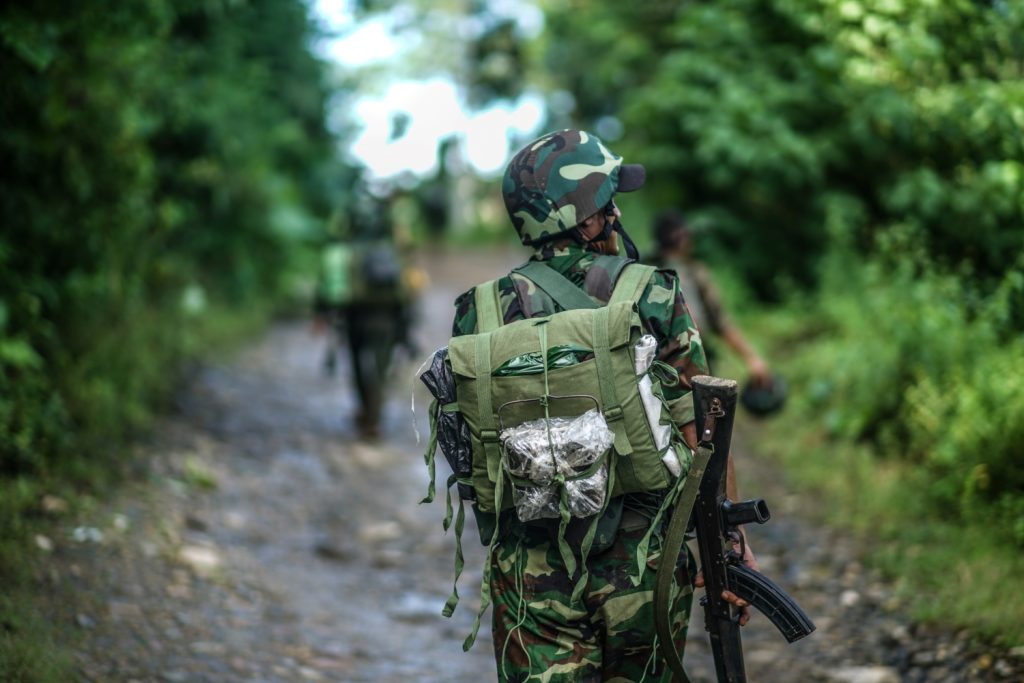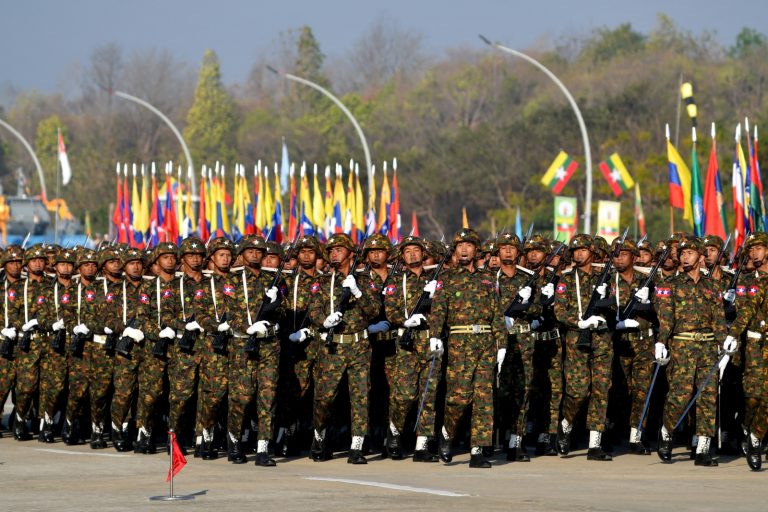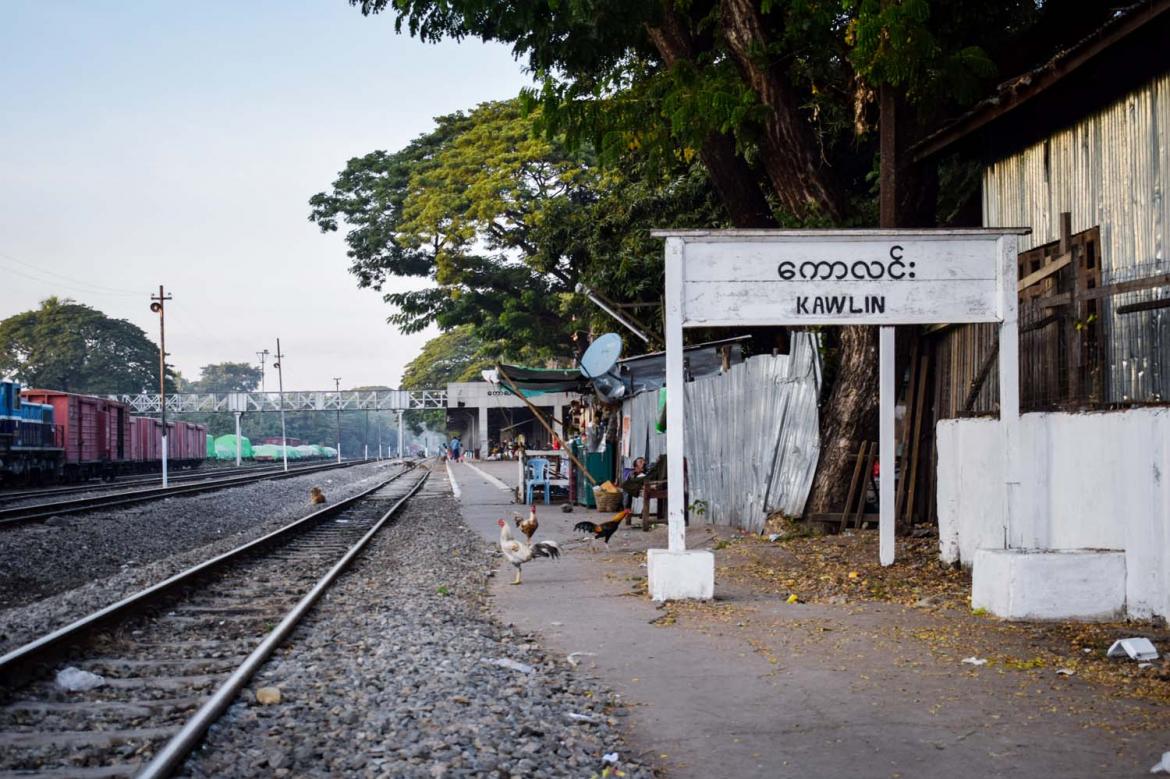The Shanni Nationalities Army has been accused of aiding the Myanmar military since the coup, while its supporters say the group is defending against persecution by the Kachin Independence Army.
By FRONTIER
Ko Zaw Naing* lay on his back, hands tied and eyes blindfolded, as slick warm blood spread from a slash in his throat.
“Hey! Make sure you finish it. Are they all dead?” shouted a man from high above, where Zaw Naing had been struck in the head and thrown from a ledge before having his throat slashed.
Still shocked to find himself alive, it was only after the soldiers left that Zaw Naing discovered he wasn’t the only survivor.
“The first five people were killed, but the remaining three of us escaped with our throats cut,” he told Frontier. He alleged that the attackers were members of the Shanni Nationalities Army, an ethnic armed group that has been accused of collaborating with the Myanmar military since the 2021 coup.
A doctor, who said he treated Zaw Naing and another survivor, corroborated the story and showed Frontier pictures of their wounds. He said the two men came to his clinic in Kachin State’s Mohnyin Township on January 20, the morning after Zaw Naing said the massacre occurred in neighbouring Sagaing Region’s Homalin Township. He said both men had lacerations on their backs and cuts on their necks, but Zaw Naing’s throat was much more seriously wounded.
“He was weakened, and his wound was deeper. His whole shirt was stained red with blood,” the doctor said.
Originally from Yangon, the doctor fled to Kachin around two years ago, shortly after the military takeover. He joined the mass strike of civil servants known as the Civil Disobedience Movement to protest the coup, starting his own secret clinic rather than working for a government hospital.
“They were kept at our hospital for one day. It’s not safe for them to stay here,” he said, explaining he was worried that the SNA could raid the clinic and put other patients in danger. “So, I sent them back to their villages once their conditions were stable.”
The other man he treated, Ko Htin Lin*, is a 23-year-old from Homalin who came to Nam Pote village in Kachin’s Hpakant Township to scavenge for gold in March last year.
But instead of striking it rich, he found himself plunged into a brutal war.
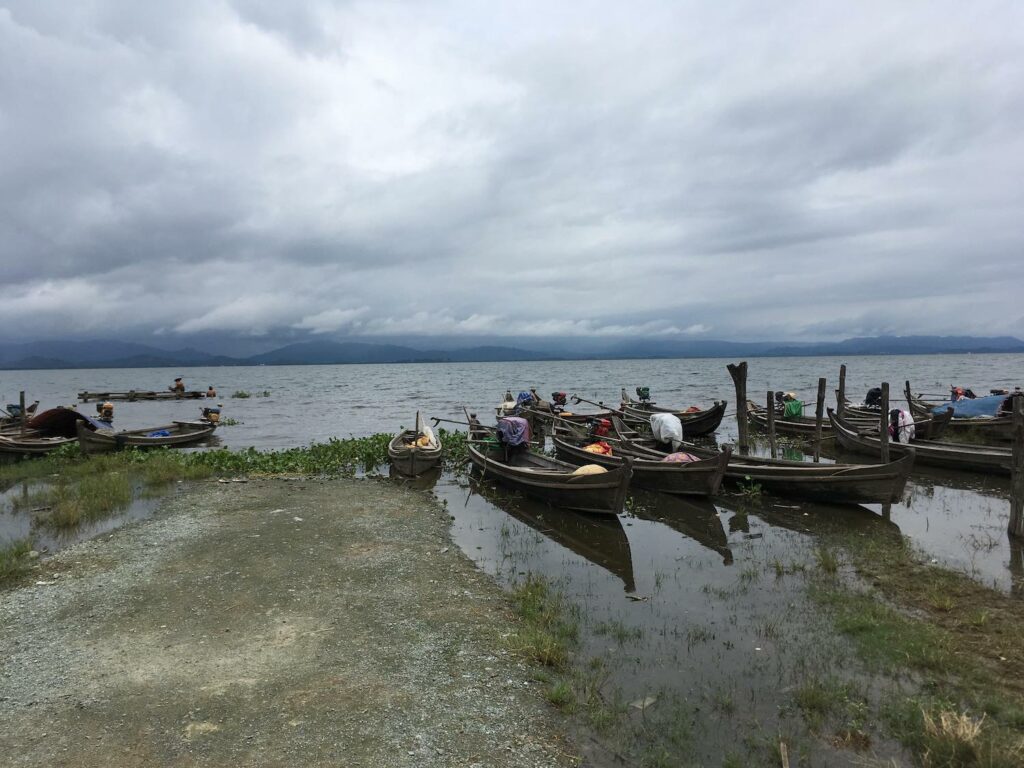
The razing of Sezin
After the coup and subsequent violent crackdowns on peaceful protesters, dissidents took up arms against the military, forming militias known as People’s Defence Forces in cooperation with ethnic armed groups that have been fighting for political autonomy for decades.
In July last year, PDFs and the Kachin Independence Army, one of the country’s most powerful armed groups, clashed with regime soldiers near the Nam Pote gold mining creek, prompting most scavengers and their families to flee.
Htin Lin fled to Sezin village, also in Hpakant, which held around 600 households with a population of around 3,000 at the time, until repeated clashes between joint KIA and PDF forces and allied troops from the Tatmadaw and SNA left the village virtually empty. In early January, the junta pressured some displaced civilians to return, many of whom had to live under tarpaulin shelters because about 400 homes had been allegedly torched in the fighting.
Htin Lin was among the very few who never left Sezin, although his wife and son fled with the others. He recalled sheltering in the village monastery on the evening of August 8 last year, amid the sounds of gunfire and artillery shells. About a week later, he said the Tatmadaw entered the village, detaining anybody who remained, including Htin Lin and a friend.
“I was detained and interrogated for six days, without food or water, because they accused me of being a PDF fighter,” he told Frontier. “Then, I spent more than six months in a 10-foot-wide cell with 13 other people in the Sezin police station.”
One of his fellow prisoners, who was already there when he arrived, was Zaw Naing.
Htin Lin said the oldest detainees were in their 60s, and the youngest, a 14-year-old boy, was brutally tortured.
“The kid’s legs were hit with a cylindrical ruler, until you could see his shin bone. When his family came to look for him, the police told them he wasn’t there.”
Htin Lin said the prisoners could clearly hear any time an outsider visited, but guards would threaten to kill them if they made any noise. Despite being held in a police station, their captors were mostly soldiers, commanded by an army officer.
He said they were given only a small amount of rice, curry and water each day, and he was only able to bathe once during the entire six months.
“Out of the 14 people in the room, four of them died around the month of Tazaungmone [November]. One of them committed suicide by hanging himself at night,” he recalled, saying the other prisoners were beaten when the suicide was discovered. Three others died of illness.
On January 19, Zaw Naing said the prisoners had their mouths taped shut and their eyes blindfolded, before being handed over to the SNA at around 9:30pm. The Shanni troops took them by truck to woods near Thae Zalaut village in Homalin where the massacre unfolded.
The doctor who treated the survivors railed against the SNA, saying it “does not represent the Shanni people”, and accused them of being funded by the Tatmadaw to fight against the KIA and PDFs. He compared the group to the Kayin State Border Guard Force, an ethnic Karen militia under the military’s command that regularly attacks the Karen National Union.
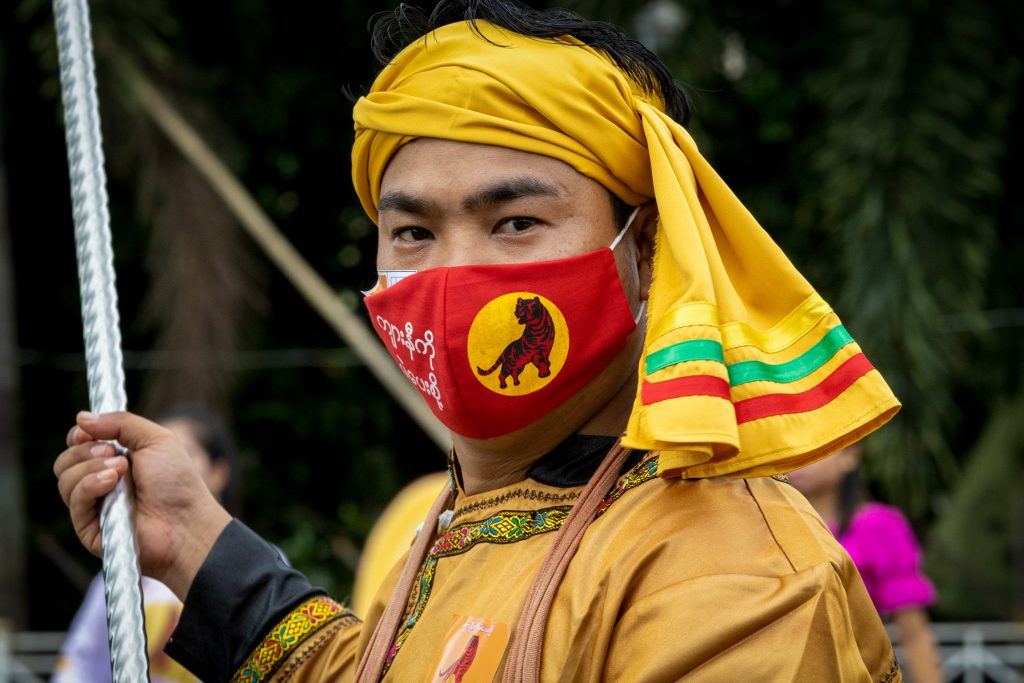
‘An ethnic group must have its own army’
But the SNA didn’t always have this reputation.
When the group first entered the fray in 2016, it appeared to be more anti-military than earlier Shanni armed groups. Even in July 2021, five months after the coup, a Shanni youth told Frontier that the SNA’s supporters were mostly opposed to the Tatmadaw.
The Shanni (“Red Shan”) people, also known as the Tai Leng, primarily live in northern Sagaing and southern Kachin. They have long alleged discrimination and oppression by the KIA, including forced recruitment and extortion. In 2015, the Tai-Leng Nationalities Development Party accused the KIA of assassinating two of its candidates in Hpakant ahead of the election that year.
As with other inter-minority conflicts in Myanmar, this alleged persecution has at times driven Shanni communities to arm themselves and collaborate with the military, with one prominent Shanni militia operating directly under Tatmadaw command.
However, the SNA’s demand for an autonomous Shanni state put it at odds with the military, which has long sought to suppress new ethnic movements for self-determination, while overlapping territorial claims in Sagaing and Kachin also antagonised the KIA. “The Kachin say we are a vassal of the Bamar, and Myanmar government troops say we are the Kachin armed groups’ informants,” a brigade commander told The Irrawaddy in 2019.
As Sagaing and Kachin became hotbeds of resistance to military rule after the coup, tensions deepened. The KIA increasingly armed and supported PDF groups operating in Sagaing, including in areas claimed by the SNA.
The SNA did not respond to multiple requests for comment by Frontier but released two public statements last month. In the first, the group accused the media of spreading conspiracy theories and claimed to be protecting the interests of the Shanni people while facing attacks “from all sides” to “cripple, weaken and completely destroy” it. Another statement, addressed to human rights groups and international organisations, warned that the KIA was “accelerating the genocide” of the Shanni people with the support of PDFs. It said Shanni people “have been subjected to inhumane killings, torture and forced servitude”.
Sai Kyaw Oo, a former member of the TNDP, said that the SNA traces its spiritual roots to the Wuntho uprising of 1891, when Shanni people rebelled against British colonial rule.
“Under that influence, the SNA was born,” he said. “Some of them [Shanni] may not think that [the SNA] represents the Shanni people. However, a true Shanni would say the SNA represents 80 to 90 percent of the ethnic group.”
Kyaw Oo was evasive when asked about the coup and current political situation. He said Shanni people have also suffered during this time and heaped blame on the KIA.
“The KIA adheres to tribalism. They use their weapons to bully the other local ethnic people in the region,” he said, adding that the SNA cannot compete on their own, so it is natural they would cooperate with another “organisation”.
Aung Khin, president of the Shanni Solidarity Party, based in Sagaing’s Monywa Township, said the Shanni people are “walking their own path”.
“If you ask me what I think of them [the SNA], I think an ethnic group must have its own army,” he said, although he insisted his party is not associated with the armed group.
But a 28-year-old Shanni from Kachin’s Bhamo Township had a different perspective.
Yaung Ni*, whose deceased father had served in the KIA, told Frontier that some of the PDFs operating in these contested areas are mostly made up of Shanni youth like himself.
“We Shanni people must have our own army, but the SNA does not represent us. It only represents the few who support them,” he said, insisting that PDFs in Homalin and Momauk townships are 80pc Shanni.
“This shows the SNA doesn’t represent the entire Shanni ethnic group.”
But Yaung Ni agreed that the KIA’s actions may have pushed the SNA to the other side. He said the SNA initially condemned the coup and clashed with the military, and even quietly trained some PDFs.
“But things started to change due to the KIA’s complex political goals. The KIA clearly doesn’t want the SNA to grow in power. You can see that most of the battles in Sagaing Region have taken place in the SNA’s territory,” he said. “So that’s what pushed the SNA to join forces with the Tatmadaw.”
Yaung Ni said the KIA has extorted taxes and forcibly recruited Shanni people from smaller villages, but the fact that so many Shanni youth have volunteered to serve in PDFs under KIA command shows they are prioritising overthrowing the military regime over anything else.
He added that despite the SNA’s initial anti-coup stance, the KIA ultimately offered a more viable means of fighting the junta. “I believe the bulk of Shanni young people from PDFs opted to serve under the KIA rather than the SNA because the SNA could only provide training and could not meet their need for weapons or financial support,” he said.
Another Shanni youth, 27-year-old Nyi Nyi* from Sagaing’s Banmauk Township, who unsuccessfully contested the 2020 election for the SSP, said he has been unable to return to his home for more than a year out of fear of the KIA.
“Lately, Shanni political, literary and cultural figures are being assassinated in Hpakant and Mohnyin in Kachin State, as well as in the upper areas of Sagaing. We can’t say for sure if it was done by the KIA or a PDF because [PDFs] are serving under KIA”, he said.
On January 23, an unverified video went viral on social media, seemingly showing KIA soldiers destroying Shanni cultural artefacts in Homalin. Also last month, the Shan Ethnic Affairs Society accused the Kachin PDF of assassinating a SSP member in Mohnyin.
“The motive behind these assassinations, in my opinion, is that the rising power of the Shanni threatens the Kachin,” Nyi Nyi said, referring to the demand for Shanni autonomy in areas also inhabited by Kachin.
“The Kachin and Shanni people have complex historical and political problems. They did not start with the coup, but the political game got trickier after it.”
* indicates the use of a pseudonym on request for safety reasons


